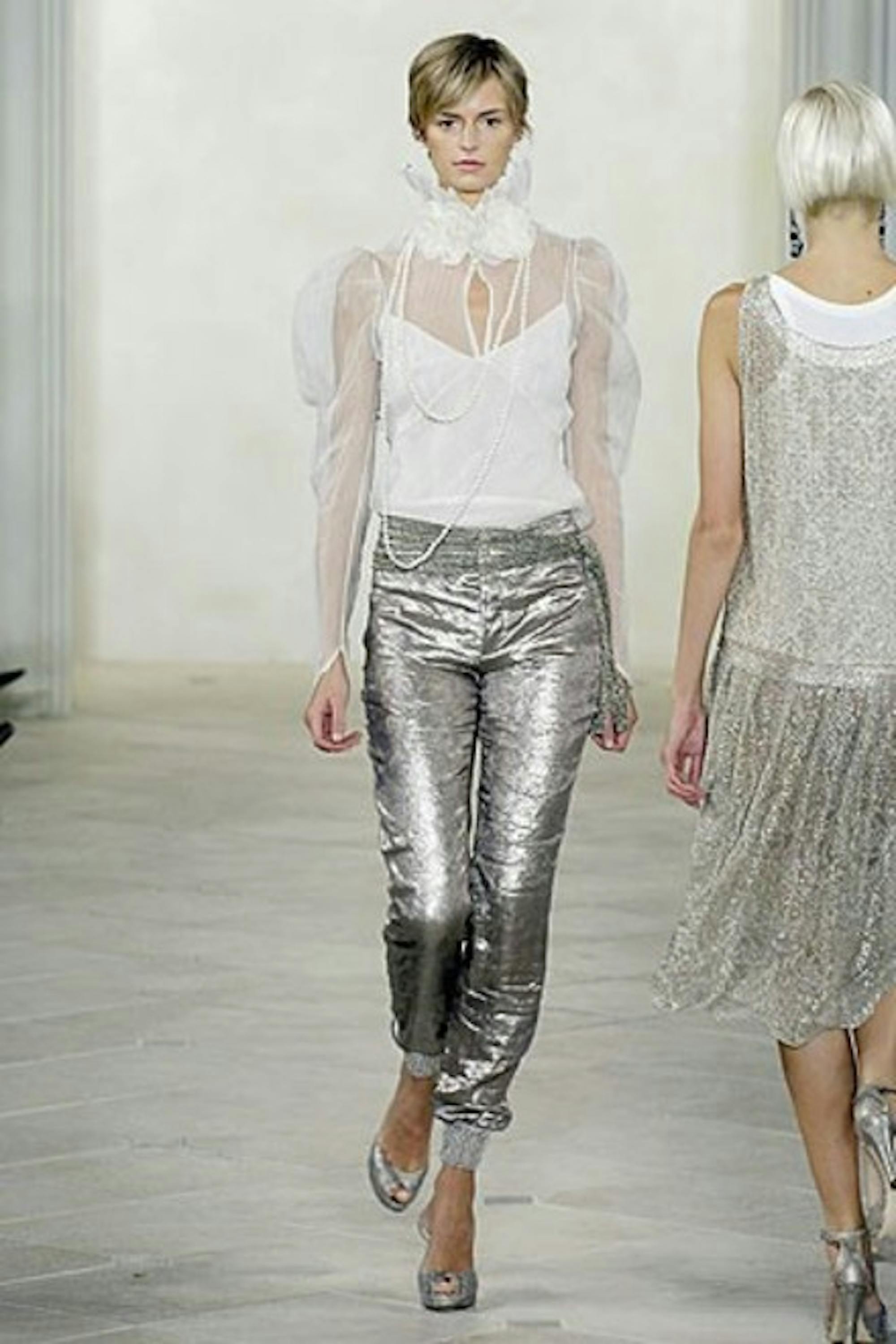For the Spring 2007 Olympus Fashion Week, both the glitterati and the paparazzi descended onto Manhattan from September 8 to 15, as designers sent models down the runway in a variety of looks that ranged from beautifully wearable to painfully out-there. Thanks to magazines, the internet, and "Project Runway," fashion is ostensibly more accessible to the public outside the Bryant Park Tents. Here are some highlights.
Many designers reaffirmed the billowing shapes and multiple layers of the fall season, translating them into spring with lighter colors and fabrics. Oscar de la Renta showed a collection full of the ubiquitous bubble skirt in bright colors and floral prints, turning his models into bells and spheres. Anna Sui successfully gave spring a punkier edge in her collection, where baby doll dresses were layered over ripped fishnets instead of leggings.
Many collections showed botanic prints that shouted "spring," while the little white dress seemed to be the new little black dress, showing up everywhere.
In a move that rippled across the Atlantic, Madrid announced that any catwalk model whose body mass index, the weight-height ratio, fell below 18 would be banned from Pasarela Cibeles, Spain's Fashion Week equivalent. While New York refrained from following suit, images of gaunt models provoked commentary all week.
In the process, some new silhouettes emerged. Marc Jacobs showed tulip-shaped shorts that, when paired with loose tunics in the collection's muted color palette, gave his models that windswept nomadic vibe. Other designers veered more towards the avant-garde. Laura and Kate Mulleavy, the sisters behind Rodarte, a fledgling line that was recently recognized as a finalist for the Council of Fashion Designers of America/Vogue Fashion Fund, showed pieces so flamboyant and haute couture-esque that few if any in their audience would find a place for the clothes in their wardrobes.
Other designers responded to fall by focusing on the body, cinching and tailoring where so many others loosened. Michael Kors found his muse in the form of a dancer in her many variations. Belted trenches and long cardigans mirrored the daily scene outside Lincoln Center of ballerinas coming and going to practice. Leggings and one-shouldered pieces brought '80s jazzercise to mind, while pieces punctuated with black sequins shouted "Fosse, Fosse, Fosse!" While the inspirations may have been varied, the collection was made coherent by its black, white and tan color scheme and its overwhelming embrace of the female body. The waist, so hidden in other shows, appeared again and again, often paired with lithe exposed limbs.
Vera Wang also featured ballet-inspired pieces in her ready-to-wear collection. There was tulle, there was gauze, there was pink, but only just enough to suggest a tutu and not to caricature it.
The general result of Fashion Week was pretty, but almost overwhelmingly so. In many collections, even suits and pencil-thin pants were dressed up with ruffles or pastels. Calvin Klein designer Francisco Costa tried to romanticize his label's usually simple approach to sportswear with gauzy separates so with so many tucks and pleats that they looked messy and unfinished. It was a disappointing turnout from the most recent recipient of the Designer of the Year award from the Council of Fashion Designers of America.
Collections that envisioned a different woman, one who did not have a need or want to constantly dress up for a party or red carpet event, were refreshing and rare. Narciso Rodriguez eroticized the clean lines and tailored shapes of his dresses with fabric that shined with a plasticity normally reserved for red light districts. But Rodriguez designed for a woman who was not trashy but confident and powerful; he even fashioned a warrior-like chest plate for his final gown.
Donna Karan and Ralph Lauren both were inspired by decidedly un-pretty Africa, but the collections were vastly different from each other. Whereas her DKNY show earlier in the week had been sleek and urban, Karan's eponymous line featured shapeless dresses and tunics in earthy colors and vaguely ethnic prints. Lauren, on the other hand, took a more intellectual and imaginative approach, modernizing fashions from the twilight of the British Empire. It was a chic study in black and white, seamlessly transitioning from the tailored suits of an Englishman to more exotic caftans and Nehru jackets of colonized North Africa and India. The collection shone both literally and figuratively when it moved to eveningwear, featuring metallic brocades and beading on casually elegant gowns and pants.
Many other designers showed collections last week -- these were not even all of the highlights--but in the fast-paced world of fashion, one barely has time to look back. Editors, buyers and celebrities have already jetted off to London for the next set of shows. Stay tuned.




